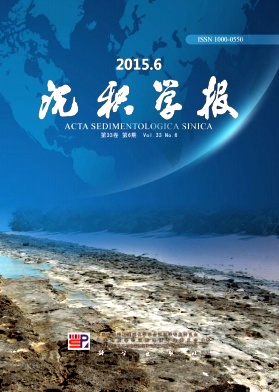Recognition on Sedimentary Environment of Upper Paleozoic in Xingcheng, Western Liaoning
doi: 10.14027/j.cnki.cjxb.2015.06.009
- Received Date: 2014-08-20
- Rev Recd Date: 2015-02-13
- Publish Date: 2015-12-10
-
Key words:
- grain-size analysis /
- sedimentary environment /
- Upper Paleozoic /
- Xingcheng /
- western Liaoning
Abstract: According to the result of grain-size analysis which combine with the characteristics of stratigraphical sequence, texture, structure and lithological properties, there are four kinds of sedimentary environments in the Carboniferous to the Permian could be discerned in Xingcheng, Western Liaoning. Each kind of sedimentary environments have distinct characteristics of grain-size. First one is meandering river environment whose layers are in Benxi Formation and middle and lower Shihezi Formation, the average grain-sizes of sediments are mainly 3φ and sediments have a good gradation. Their frequency curves are slight skewed positive distribution. There are two kinds of grain-size probability cumulative curves. The one of distributary channel is typical bi-segment pattern and another of crevasse splay is "low suspension" bi-segment pattern. Second one is delta plain environment. It is identified in Taiyuan Formation and Shanxi Formation. The sediments of swamy have better gradation whose average grain-size is about 3.2φ and their grain-sizes are more fine than distributary channel's which is similar to meandering river. The frequency curves of sediments of delta plain reveal both positive and negative skewness. The grain-size probability cumulative curves of distributary channel manifest as "low-suspension" bi-segment pattern but ones of swamp are one-segment pattern which reflect vertical-accretion process. Third one is braided river environment. It is distinguished in upper Shihezi Formation and its average grain-size is near 2.5φ. The gradation is middle to better and the frequency curve of it is slight skewed positive distribution. The type of grain-size probability cumulative curves is between typical bi-segment pattern and "high suspension" bi-segment pattern. Fourth one is alluvial fan environment in Hamashan Formation. It has middle gradation and its average grain-size is about 2φ. According to common and extreme skewed positive distribution and of its frequency curves, it shows that most of sediments are composed of coarse component. "High suspension" bi-segment pattern of probability cumulative curves show that the hydrodynamic condition of the time was strong. Considering paleohydrodynamic condition and evolution of sedimentary environment, this area was a basin in close-shore environment which was warm and moist during Late Carboniferous to the middle of Middle Permian. With the Earth's crust uplift, the environment changed in direction of inland environment progressively from late Middle Permian. Up to the end of Late Permian, the environment had turned into inland which was dry and torrid.
| Citation: | ZHANG MinMin, ZHANG MeiSheng, LI XiaoBo, WANG YiNi, YANG Ming, YAO Lu, WANG ChengLong, ZHANG Qian. Recognition on Sedimentary Environment of Upper Paleozoic in Xingcheng, Western Liaoning[J]. Acta Sedimentologica Sinica, 2015, 33(6): 1159-1169. doi: 10.14027/j.cnki.cjxb.2015.06.009 |






 DownLoad:
DownLoad: